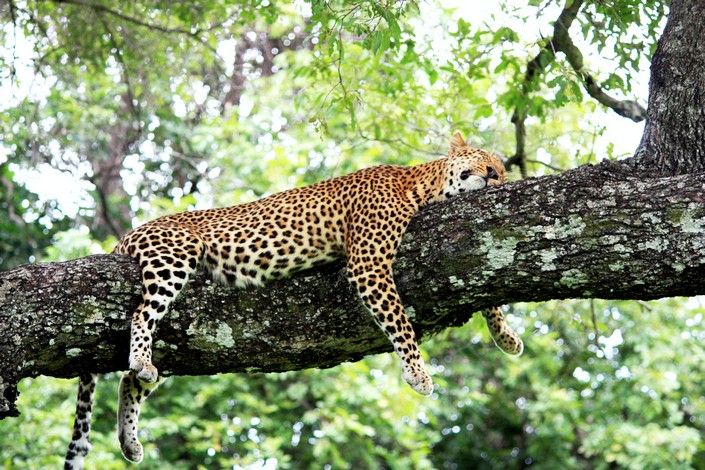One of the most fantastic wildlife sanctuaries in Southern Africa, Etosha National Park, is located in the expanse of dry land that lies in Northern Namibia. The reserve supplies travellers with spectacular game viewing in one of the continent’s most accessible destinations. The Park stretches over 22,270 square kilometres and derives its name from the massive Etosha Pan. The reserve hosts exquisite wildlife, with zebra and springbok peppered across the horizon, and various waterholes drawing in abundant animals such as the threatened black rhino, lion, elephant and huge concentrations of antelope.
Etosha (‘place of dry water’) houses a massive salt pan that provides a silver-white background of glimmering mirages to a region of parched plains and thorn scrub. The pan itself only manages to hold water after heavy rains, and sometimes only for a couple of days each year. However, this water seems to be enough to grow blue-green algae which attract thousands of beautiful flamingos. The Park is free of malaria and contains a large variety of accommodation, as well as restaurants, viewing platforms, stores and petrol stations. There are also a couple of luxury camps to reside in for those less suited to the bush. Traditionally, guests of
Etosha would have a selection of three camps in which to stay in the Park – Namutoni, Halali and Okaukuejo. These three camps have the best floodlit waterholes, providing marvellous night game viewing. Okaukuejo draws in rhino and elephant, Halali attracts leopard and Namutoni, though containing less big game to view, supplies visitors with awe-inspiring views over the Etosha Pan and its abundant bird life.
There are 114 species of mammal, 340 species of bird, 110 species of reptile, 16 amphibious species and, astonishingly, just one species of fish. The most common plant in the region is Mopani, which covers so much of northwest Namibia that an area is named after it. One of the most incredible trees located in the reserve is the African moringa, or ‘ghost tree’. A dedicated fence protects this unique, strangely-shaped tree in what is known as the haunted forest. Bushwillow is also quite common in the Park, known locally as ‘Kudubusch’ due to the many Kudu that thoroughly enjoy munching on its leaves. Rhino eat the whole branches of bushwillow, whilst elephant favour its bark.
For thousands of years, the region that is now the Park was inhabited by the Hai||Om (bushmen). Their complex society, consisting of hunters and gatherers, acquired a wealth of knowledge regarding the local biodiversity. They learned which plants to use for medicine as well as the various patterns of animal behaviour. Though the tribes were evicted from the area in the 1950s, their cultural identity is still evident in the region. Morning, afternoon and evening guided tours are conducted throughout the Park, giving you a unique view of the different fauna and flora that inhabit the area. If you wish to be fully immersed in exquisite nature that has transformed itself over millions of years, a visit to Etosha National Park is most certainly recommended.
Head to Namibia to explore the wilds of Etosha National Park on tour.
Activities:
* Safari game drives
* Game drives viewing zebra, springbok, black rhinoceros, lion, elephant, antelope and flamingos
* Floodlit waterholes for night-time game viewing
* Nature Reserves
Related Articles:





0 Comments